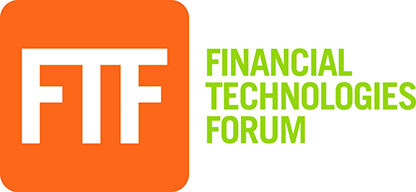Canada and the U.S. have shared a common standard securities settlement cycle for longer than most in the industry today can remember. Industry participants in both countries successfully moved from a standard cycle of five to three business days after trade date (from T+5 to T+3) in 1995 and from T+3 to T+2 in 2017.
KYC
Some Pointers On Picking New IT Providers
As financial services firms work to create efficiencies in the performance measurement and client reporting teams, there are some fundamental questions that need to be addressed from an information technology (IT) management perspective. These questions also apply to all IT systems that support other facets of securities operations. Firms need to be sure to include
KYC
How the Unique Transaction Identifier Solves Post-Trade Challenges
Securities settlement fails are costing the industry billions in operational overheads and fees today. This is only intensifying under the Central Securities Depositories Regulation (CSDR) Settlement Discipline Regime in Europe and shortening settlement cycles. With the deadline for T+1 settlement implementation coming up on May 28, 2024, in the U.S., solving post-trade frictions that get
KYC
Turning Margining Challenges into Solutions
(Editor’s Note: In this guest post for the Bull Run, Varqa Abyaneh, chief product officer from Quantile Technologies Ltd. focuses on industry participants grappling with the costs of funding multiple margin requirements globally.) Designed to improve the safety and stability of markets, regulation inevitably increases the cost of trading. Participants are still expected to deliver
Automation
Don’t Think like a Human When Designing RPA Systems
Robotic process automation (RPA) is undoubtedly the hottest topic in discussions about the architecture and functionality of modern financial back-office support systems, including post-trade operations. What started as efforts to improve productivity of various, isolated labor-intensive data processing operations has quickly become an integral component of digital transformation strategies for financial institutions around the world.
Automation
Time to Automate Performance Reporting for Clients & Prospects
I am looking forward to my participation in the Performance Measurement Americas (PMA) 2018 panel discussion entitled “Time for Full Automation,” which will take place Friday, March 9, at 12:05 p.m. at The Westin New York at Times Square, 270 W 43rd St., New York, NY 10036. Putting automation around the calculation of investment performance
Compliance
Ready, Set, Go – Benchmark Regulation Has Arrived!
I am looking forward to my participation in the Performance Measurement Americas (PMA) 2018 panel discussion entitled “Get Ready for the EU’s Benchmarks Regulation,” which will take place March 9 at 1:50 p.m. in New York. With a certain degree of Irish humor, I’ve described this new regulation to colleagues in my firm as a “forgotten child.”
Buy-Side
GIPS® 20/20 Updates
By Michael Beck, CIPM, CFP, vice president at Glenmede The Global Investment Performance Standards (GIPS®) have been in existence since 1999 and were revised in both 2005 and 2010. They are used to promote ethics and integrity in the financial services marketplace by having voluntary compliance by asset managers. There are currently 41 country sponsors
Compliance
GIPS: To Port or not to Port – that is the Question?
By Ambika D’Souza, VP, Global Head of GIPS, State Street Global Advisors Introduction The investment management industry has seen its fair share of mergers and acquisitions (M&A) and team lift-out activities over the years. During this process the aspect of the portability of investment track records is sometimes overlooked. Global Investment Performance Standards (GIPS[1]) “Portability”
Cybersecurity
Cybersecurity: What to Look for?
Cybersecurity threats are diverse, ranging from government sanctioned and well-resourced institutions, sophisticated criminal enterprises and disillusioned employees. Most breaches can be averted by following best practices. Others are wholly unavoidable irrespective of the systems or technology that fund managers have at their disposal. Institutional investors need to be cognizant of the threats facing their hedge








